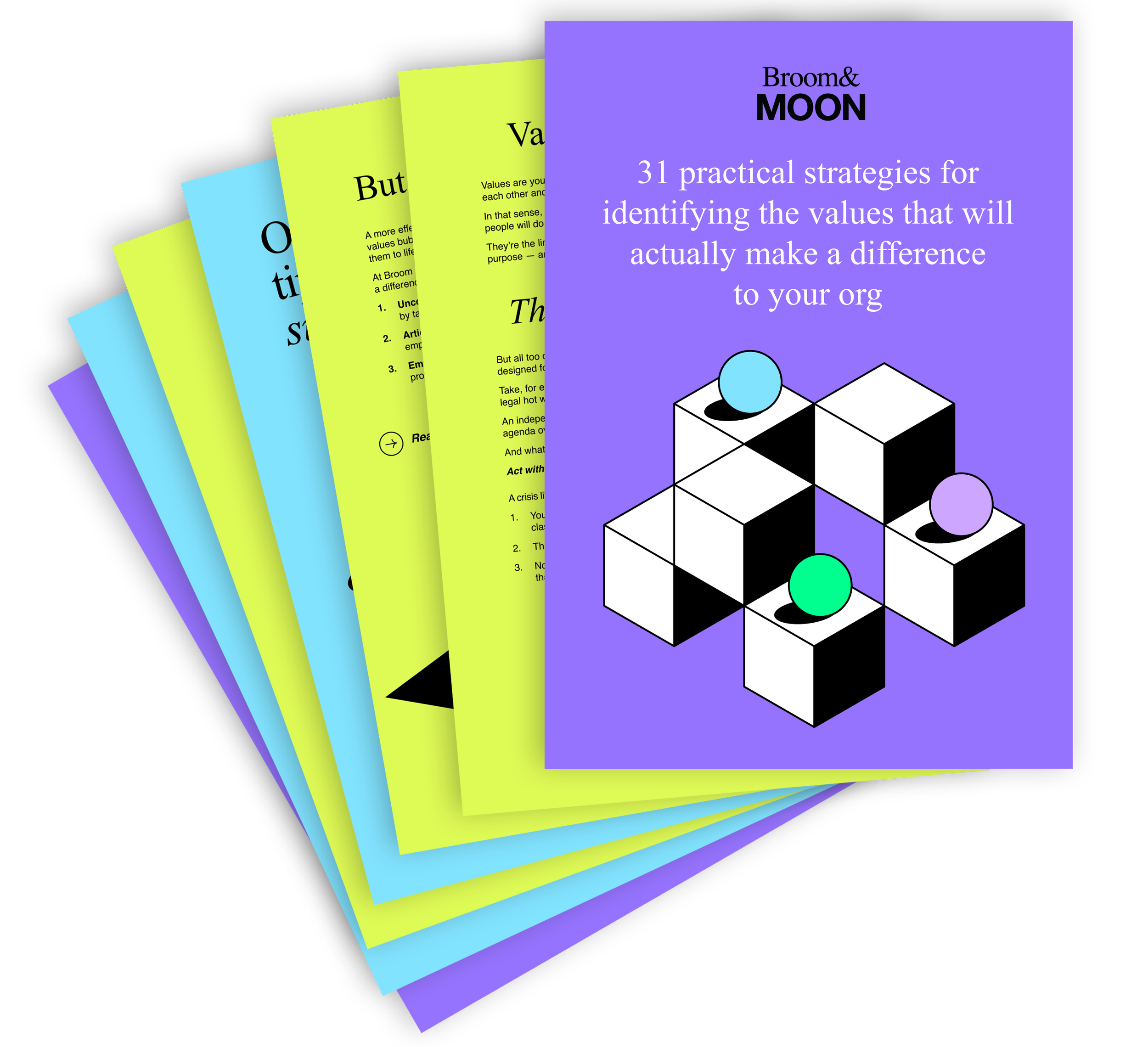Tech brand? Here’s how to present your startup idea so people actually get it
We just got back from Web Summit — the annual conference in Lisbon for tech startups and the VCs whose funding they’re after.
With over 70,000 attendees, hundreds of speakers, and seemingly endless exhibition stands, Web Summit is massive. Overwhelmingly so. Everyone agrees your first Web Summit is just to learn how to do Web Summit.
With so much going on, if you’re exhibiting at Web Summit, it’s a challenge to stand out.
Our number-one piece of advice for any startup who wants to rise above the noise at Web Summit 2024?
Don’t put your developers on the stand or the stage — at least not without some guidance on how to speak Civilian.
As we pointed out in a previous post, investors are as interested in the why of your business as much as its what.
So here are 8 tips to ditch the codespeak for language that will light up the eyes of that passing VC.
1. Remember: your goal is to sell that VC an idea
Simon Sinek has built a whole career around the insight that people don’t buy what you do, they buy why you do it. And he’s got a good point.
Because what will thrill that potential investor most?
Not the nitty gritty of how your algorithm works. But its potential to change the lives of a large number of fee-paying customers. Your product’s why, not its what.
That time-pressed VC probably has scores of entrepreneurs vying for their attention.
The longer their brain has to spend figuring out what your product does — and so why it matters — the less chance your pitch will hold their attention.
2. Slash the word count in your deck
Clarity and efficiency are key, with research showing that VCs typically spend 3 mins max reviewing a pitch deck. They also generally like to see no more than 35-50 words per slide.
A great example of clarity and efficiency at work is the legendary deck that won AirBnB its first round of funding.
What could you remove to make your deck look as instantly “gettable” as that?
3. Observe the rule of 3
One thing you’ll notice about the AirBnB deck is the number of slides that group ideas in threes — like presenting their solution as allowing people to:
Save money
Make money
Share culture
This rule of three has a rhetorical heritage going back millenia. Think of famous rousing phrases like:
I came, I saw, I conquered
Liberté, égalité, fraternité
Blood, sweat and tears (originally blood, toil, tears, and sweat, but no one ever remembers the fourth).
How could you rationalise the core ideas of your pitch so they’re as persuasive and memorable as these phrases?
4. Trust beats technical expertise
Research shows VCs are more likely to fund a founder they trust than a founder who seems competent. So it pays to dial down your tech talk in favour of relationship building.
In fact, if you do try to impress that VC with your technical smarts, that effort in itself can backfire.
In an experiment reported in this paper, Psychology professor Daniel Oppenheimer presented readers with texts of varying complexity.
He found that using long, complicated words didn’t impress readers.
The opposite in fact: it actually caused people to judge the authors as having lower intelligence.
In other words, simple looks smarter than complex.
5. Take your cue from Apple, where clever = simple = clever
Apple products are the height of simplicity. They’re elegant to look at, gorgeous to hold and effortless to use.
But no one would ever argue that Apple’s products are simplistic. On the contrary, there’s a whole lot of cleverness and complexity that the product designers have worked hard to conceal.
In the words of Steve Jobs:
“Simple can be harder than complex: You have to work hard to get your thinking clean to make it simple. But it’s worth it in the end because once you get there, you can move mountains.”
6. That’s not to say you shouldn’t explain your tech…
To be clear, we’re not saying you shouldn’t give that VC a peek under the bonnet.
We’re just saying:
a) don’t lead with an account of the workings of the engine, and
b) make it as easy as possible for them to connect the dots.
The most persuasive communicators of tech don’t try to persuade people they’re clever.
Instead, they aim to make non-techies feel clever with explanations any intelligent non-expert can easily grasp.
7. Concretise your idea with a metaphor
So how can you make complex, abstract talk of AI and algos clear to those whose brilliance lies in other fields (business and finance, for example)?
Answer: use a metaphor or analogy to relate your tech with people’s everyday experience.
Scientist John Naughton offers a great example of the persuasive power of metaphor: using Delia Smith’s Complete Cookery Course to persuade a lay audience of the importance of open source technology.
The Nobel-winning physicist Richard Feynman was another brilliant communicator who used highly visual language to make abstract ideas readily picturable by a lay audience (as here).
It’s also impossible not to be charmed by Feynman’s childlike sense of delight in his topic.
Imagine having that magical eyes-light-up effect on people every time you talked about your tech?
8. Check out this CEO that gets it
During Web Summit, we were cheering on Barb Hyman, CEO of Sapia who was pitching at the KPMG Global Tech Innovator Award.
There’s some super smart AI behind Sapia’s tech, but Barb’s all about communicating her product’s why: changing lives by seeing the potential in everyone.
Want help communicating your brand’s why? Or getting your tech team to tell a more compelling product story? Get in touch — we’d love to help!


